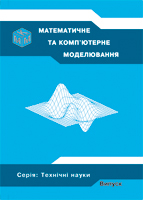Моделювання оптимальних схем вакцинації населення з використанням епідеміологічних даних
DOI:
https://doi.org/10.32626/2308-5916.2019-20.99-103Анотація
Розглянуто створення математичної та комп’ютерної моделі в проблемі поширення різних інфекційних захворювань та епідемій. Розроблена система комп’ютерного моделювання використовує епідеміологічну SISV-модель. Ця модель визначає оптимальну схему вакцинації населення. У статті проаналізовано позитивність такої моделі у запропонованій стратегії вакцинації. SISV (сприйнятливий-інфекційний, сприйнятливий до вакцинації)-модель, де інфекція не надає імунітету (або є зменшенням до імунітету) з виключенням вакцинації. У програмному забезпеченні використовуються епідеміологічні моделі, які дозволяють дослідити процес поширення інфекційних захворювань, зробити прогноз на майбутнє, визначити ефективність вакцинопрофілактики, вибрати оптимальні схеми вакцинації з використанням епідеміологічних даних. Завдяки використанню епідеміологічних моделей можлива своєчасна профілактика епідемій інфекційних захворювань.
Посилання
Tassier T. The Economics of Epidemiology / T. Tassier. — Berlin : Springer Science & Business Media, 2013. — P. 3–24.
Hethcote W. Three Basic Epidemiological Models / W. Hethcote. — Berlin : Springer, 1989. — P. 119–137.
Brauer F. Mathematical Models in Population Biology and Epidemiology / F. Brauer. — New York : Springer, 2001. — P. 3–120.
##submission.downloads##
Опубліковано
Номер
Розділ
Ліцензія
Authors who publish with this journal agree to the following terms:- Authors retain copyright and grant the journal right of first publication with the work simultaneously licensed under a Creative Commons Attribution License that allows others to share the work with an acknowledgement of the work's authorship and initial publication in this journal.
- Authors are able to enter into separate, additional contractual arrangements for the non-exclusive distribution of the journal's published version of the work (e.g., post it to an institutional repository or publish it in a book), with an acknowledgement of its initial publication in this journal.
- Authors are permitted and encouraged to post their work online (e.g., in institutional repositories or on their website) prior to and during the submission process, as it can lead to productive exchanges, as well as earlier and greater citation of published work (See The Effect of Open Access).

